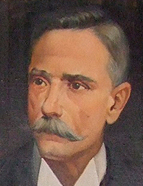

Domestically, it is not exactly easy to ‘frame’ HGB: firstly because of his unique position in the Portuguese 19 th century; subsequently, because of all the vagueness of our historiography at the time, not least in terms of institutional framework – i ndeed, the historian of HGB ’ s time in Portugal is no longer the typical scholar of the turn of the 19 th century, producer of highly erudite memoirs (a model personified in António Caetano do Amaral (1747-1819), José Anastácio de Figueiredo (1776-1805), Francisco Aragão Morato (1777-1838) and above all João Pedro Ribeiro (1758-1839), authors whose solid information will moreover be one of HGB ’ s major sources); but neither is he yet the history professional of today. HGB is no longer writing memoirs but a book with all that this transformation represents. Historia da Administração Publica [History of Public Administration] was originally intended to be a synthesis for an audience of jurists , especially the author ’ s peers in the judicial and administrative professions. However, as the book progressed, he revealed a deep-rooted vocation as a historian, producing increasingly erudite (and , therefore , analytical ) chapters. While the first volume of the original edition (volumes I and III of the 2 nd edition) still seems relatively synthetic (and based eminently on printed documentary and chronological sources; hence, it is the section of the work most dated due to subsequent changes in the state of knowledge), the remaining chapters are increasingly more in-depth , preventing the author not only from chronologically going beyond the 15 th century but also, within the Middle Ages, from fully fulfilling the plan he had drawn up. The chronology of the original edition is nonetheless instructive in this respect:
1 st volume (vols. I and III of the 2 nd edition): prepared since the mid-1960s, published in 1885;
2 nd volume (vols. IV and V of the 2 nd edition): published in 1896;
This work is financed by national funds through FCT - Foundation for Science and Technology, I.P, in the scope of the projects UIDB/04311/2020 and UIDP/04311/2020.
